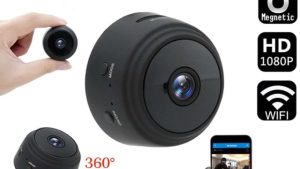Metal detectors inside the manufacturing of consumable products are as tons a part of the first-rate manipulate technique as checkweighers are. Metal can land up in food merchandise because of upstream failures of processing system such as slicing knives. Detecting this metallic earlier than it reaches the client is the role of meals and pharmaceutical metal detectors. Detectors fall into certainly one of 3 styles: horizontal conveyor, tube, or gravity drop. Horizontal conveyor styles typically offer a tunnel through which a conveyor moves dry, bulk merchandise, meats, etc. Tube styles are used round pipes that move beverages or slurries (ground beef) or, for dry goods, around pneumatic conveyors. Nokta Metal Detectors Gravity drop styles are popular for dry, bulk goods as they can be positioned just in advance of the packaging point on a vertical shape-fill-seal gadget, for example, and terrible product may be ejected simply before it might input the package deal. This is a frequent method while merchandise are packaged in metalized movie, as metallic packaging can throw off detectors. Some structures are installation to clearly stop upon detecting steel inside the product at the same time as others use computerized rejection schemes to cast off tainted cloth from the line.

Detector technology includes primary sorts. Single coil-primarily based structures depend upon the formation of eddy currents in metallic as it passes via a magnetic discipline. Induced via a coil, the plain impedance of this coil changes whilst the secondary magnetic area created by means of the eddy currents oppose that of the inducing field.
Balanced coil systems account for “product consequences” including moisture or low-stage conductivity and reduce the incidence of flagging true product. Manual or computerized product-impact compensation lets in the detector to be tuned to filter out fake alarms. Some manufactures use multi simultaneous frequencies in their structures to suppress any indicators coming from the lively product. These are particularly powerful if the product is warm, moist, chilled, or cooling.
Systems are calibrated using goals, generally metal spheres which, due to their curved surfaces, offer the lowest eddy present day response in a magnetic area. As metal might not travel through a device at the same fee as the cloth because of one-of-a-kind densities, some producers provide advantageous pace manipulate which tracks the speed of the steel, insuring accurate rejection of the steel and minimizing the ejection of active product.
Machine structures are available that undergo the stringent washdown/sanitizing regimes of many food processing operations. Some structures combine metal detection and checkweighing in a single device.
Manufacturing/Process Protection
Unexpected steel in uncooked substances can cause the harmful of processing device and might result in harm if it is going undetected. The practice of “tree spiking,” for example, as soon as a manner of protesting logging hobby, led to the use of metallic detectors in sawmills as a manner of fending off round saw harm from embedded nails and the opportunity of operator damage. Metal shards can innocently infiltrate many feedstocks. The pellets for injection molding may be infected with metallic at some point of grinding, as an instance. This can cause system damage at some stage in the injection molding procedure if the steel receives into and clogs tiny passages in the molding equipment. There are many such production situations wherein steel detection is applied.




